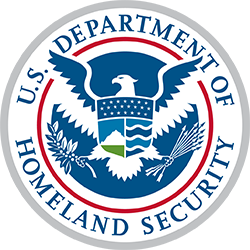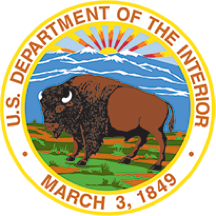Accessibility
The design of products, devices, services, or environments for people with disabilities
Accessibility isn't just the right thing to do; it’s the law. The guidance, resources, and community you find here will help you deliver accessible digital products and services in the federal government.
Related Policy
Section 508 of the Rehabilitation Act of 1973

Accessibility: essential knowledge
-
Section508.gov
This site provides guidance for federal agencies on several topics in IT accessibility, including creating accessible websites and documents, accessibility testing, accessibility training, and accessibility in contracting and procurement.
-
Best practices for writing for the accessible web
Tips for making online information accessible for those with auditory and visual needs.
-
An advanced approach to accessibility
Accessibility is one of the most important values underlying all the work that we do. This is a deeper look into accessibility: what to do, how to do it, and why it matters, especially in government.
-
Accessibility: Usability for every ability
Incorporate accessibility from the start and celebrate accessibility guidelines that help build better products and services for all users.
-
Accessibility for Teams
A quick-start guide for embedding accessibility and inclusive design practices into your team’s workflow.
Accessibility events
Spring 2024 Community Summit
USWDS Monthly Call - November 2023
USWDS Monthly Call - October 2023
Accessibility news
Equity study reaches 4,000 participants
Launched last fall, the General Services Administration equity study on remote identity proofing aims to determine if biases exist in the algorithms used for online identity verification. The study has now reached its goal of recruiting 4,000 participants from diverse communities, and experts are ready to begin analysis of the data. Learn how the team at GSA plans to conduct this data analysis, and how their findings will lead to improved equitable services delivery in technology across the government. — via General Services Administration

FEMA National Summit on Risk Communications, Crisis Communications, and Community Engagement
The Federal Emergency Management Agency Office of External Affairs is convening risk and crisis communicators and community leaders who are on the front-line of the climate and emerging hazard crises. Attend the free, June 10, 2024, summit virtually, or in Washington, DC. The agenda includes: the sharing invaluable tools and insights, how to implement culturally competent and accessible communications, how to integrate behavior change strategies, and more. An ASL interpreter will be provided. — via Federal Emergency Management Agency

Progress towards delivering a digital-first public experience
Each year, more than 400 million individuals, families, businesses, organizations, and local governments get information and services from about 430 federal agencies and sub-agencies. The Biden-Harris administration is driving a bold vision for how government agencies serve their customers digitally with OMB’s ten-year roadmap for a modern digital experience. Agencies have already made significant strides. Learn about recent successes by the IRS, CDC, NASA, and FEMA, and how OMB will continue to collaborate with agencies to ensure ongoing improvement in digital government services. — via The White House

Now available: Trusted Tester for Web Certification courses, version 5.1.3
The Department of Homeland Security (DHS) has updated its Trusted Tester program courses. It features six improvements, including accessible plain language, adjusted exam requirements, and enhanced course design. The updated curriculum aligns with the latest Trusted Tester Conformance Test Process for Web, offering a more efficient learning experience. Enrollment is open via the Training Portal, and inquires can be directed to the DHS Accessibility Helpdesk for assistance. — via Section508.gov

Justice department to publish final rule to strengthen web and mobile app access for people with disabilities
On April 8, Attorney General Merrick B. Garland signed a final rule under Title II of the Americans with Disabilities Act (ADA) to ensure the accessibility of web content and mobile applications for people with disabilities. This final rule clarifies the obligations of state and local governments to make their websites and mobile applications accessible. Learn more about this rule and why the Attorney General believes it will “break down barriers that have kept people with disabilities from fully participating in American Life.” — via Department of Justice

Resources on Accessibility
-
FY 23 Governmentwide Section 508 Assessment
Report: Assessment of compliance with Section 508 requirements.
-
M-24-08 Strengthening Digital Accessibility and the Management of Section 508 of the Rehabilitation Act
Provides requirements and recommendations to support agency integration of digital accessibility into their missions and operations, helping government technology and information resources better serve a diverse public and federal workforce.
-
PlainLanguage.gov
A resource to help federal employees write in plain language and comply with the Plain Writing Act of 2010.
-
Federal Acquisition Regulation (FAR)
The primary regulation for use by all executive agencies in their acquisition of supplies and services with appropriated funds. The FAR also contains standard solicitation provisions and contract clauses and the various agency FAR supplements.
-
Find Your Section 508 Program Manager
Agency Section 508 Program Managers (PMs) are your first point of contact for questions about IT accessibility.
-
Tabular Comparison of the Previous FAR Text Against the 2021 Update
These FAR Council updates are effective as of September 10, 2021.
-
Integrating Accessibility into Agency Diversity, Equity, Inclusion, and Accessibility (DEIA) Implementation Plans
Guidance on implementing Executive Order (14035) on Diversity, Equity, Inclusion, and Accessibility in the Federal Workforce; specifically, elements of the Accessibility Roadmap outlined in the Government-wide DEIA Strategic Plan.
-
Accessibility Requirements Tool (ART)
ART is a multifaceted tool that offers interactive, step-by-step guidance on how to determine applicable accessibility requirements.
-
Federal Acquisition Regulation Subpart 39.2 - Information and Communication Technology
This subpart implements section 508 of the Rehabilitation Act of 1973 (29 U.S.C. 794 d), and the Architectural and Transportation Barriers Compliance Board’s (U.S. Access Board) information and communication technology (ICT) accessibility standards at 36 CFR 1194.1.
-
Lessons from the 2021 Federal Plain Language Report Card
This event recap highlights best practices, a short case study video, and examples of federal web content that received both high and low scores in the 2021 Plain Language Report Card.
Tools and Services
-
PlainLanguage.gov
Guidance on the use of plain language for government communications and training for federal employees.
-
Section508.gov
Guidance for federal agencies on IT accessibility compliance.
-
The Guide to the Paperwork Reduction Act
Get help with the PRA, planning and submitting an information request, and finding your agencies agency’s PRA contact.
-
Open Opportunities
Discover opportunities across government that will help you build and make connections.
-
U.S. Web Design System
A toolkit of principles, guidance, and code that helps agency digital teams build accessible, mobile-friendly government websites for the American public.
More News and Events on Accessibility
166 posts
Equity study reaches 4,000 participants
Launched last fall, the General Services Administration equity study on remote identity proofing aims to determine if biases exist in the algorithms used for online identity verification. The study has now reached its goal of recruiting 4,000 participants from diverse communities, and experts are ready to begin analysis of the data. Learn how the team at GSA plans to conduct this data analysis, and how their findings will lead to improved equitable services delivery in technology across the government. — via General Services Administration

FEMA National Summit on Risk Communications, Crisis Communications, and Community Engagement
The Federal Emergency Management Agency Office of External Affairs is convening risk and crisis communicators and community leaders who are on the front-line of the climate and emerging hazard crises. Attend the free, June 10, 2024, summit virtually, or in Washington, DC. The agenda includes: the sharing invaluable tools and insights, how to implement culturally competent and accessible communications, how to integrate behavior change strategies, and more. An ASL interpreter will be provided. — via Federal Emergency Management Agency

Progress towards delivering a digital-first public experience
Each year, more than 400 million individuals, families, businesses, organizations, and local governments get information and services from about 430 federal agencies and sub-agencies. The Biden-Harris administration is driving a bold vision for how government agencies serve their customers digitally with OMB’s ten-year roadmap for a modern digital experience. Agencies have already made significant strides. Learn about recent successes by the IRS, CDC, NASA, and FEMA, and how OMB will continue to collaborate with agencies to ensure ongoing improvement in digital government services. — via The White House

Now available: Trusted Tester for Web Certification courses, version 5.1.3
The Department of Homeland Security (DHS) has updated its Trusted Tester program courses. It features six improvements, including accessible plain language, adjusted exam requirements, and enhanced course design. The updated curriculum aligns with the latest Trusted Tester Conformance Test Process for Web, offering a more efficient learning experience. Enrollment is open via the Training Portal, and inquires can be directed to the DHS Accessibility Helpdesk for assistance. — via Section508.gov

Justice department to publish final rule to strengthen web and mobile app access for people with disabilities
On April 8, Attorney General Merrick B. Garland signed a final rule under Title II of the Americans with Disabilities Act (ADA) to ensure the accessibility of web content and mobile applications for people with disabilities. This final rule clarifies the obligations of state and local governments to make their websites and mobile applications accessible. Learn more about this rule and why the Attorney General believes it will “break down barriers that have kept people with disabilities from fully participating in American Life.” — via Department of Justice

Calling All Americans! The federal government is seeking your input
The White House Office of Management and Budget (OMB) wants your thoughts on how federal agencies can more broadly and meaningfully engage with you and your communities. Share your ideas by May 17, 2024 to help build a more inclusive, responsive, transparent, and accountable government. — via Performance.gov

How USAGov uses data to improve content
Each month, USAGov’s content designers spend many hours ensuring that the content on USA.gov and USAGov en Español is up-to-date, accurate, and meets user needs. Learn how their team does holistic reviews of each topic section based on a rolling calendar with the goal of updating all content at least every 6 months. — via USA.gov

18F at ten
We’re celebrating all the ways we continue to realize our founding vision: bringing technologists into government, launching shared digital services, and helping partner agencies build user-centered technology. — via 18F

Spring 2024 Community Summit
Equity in action: GSA’s study on remote identity-proofing technologies
The Biden-Harris President’s Management Agenda (PMA) emphasizes an effective, equitable and accountable government. As part of this effort, the General Services Administration (GSA) is conducting a study on the equity of remote identity proofing. The study aims to assess and improve the accessibility and equity of remote identity verification technologies such as facial matching systems. Learn more about the context, purpose, and progress of the study, and how it supports GSA’s goal of enhancing digital government services and prioritizing equitable design practices. — via Performance.gov

Optimizing the federal digital experience: aligning content governance, coordination, and database development
This blog post dives into the details of building a dynamic content database and audit for onrr.gov. Learn how effective subject matter expert (SME) coordination, strategic content planning, and application of visualization tools contribute to enhancing content governance and user experience on a federal website. — via Office of Natural Resources Revenue

Balancing priorities and values
Getting the word out about voter registration: Vote.gov’s first social media takeover with USAGov
Last fall, vote.gov and the USAGov program partnered for their first-ever social media takeover on National Voter Registration Day. The campaign, which encouraged the public to register to vote, reached 36,000 people across USAGov’s platforms and generated over 2,000 engagements. The partnership raised awareness for vote.gov, boosted vote.gov’s website traffic, and laid the groundwork for the future collaborations and resource-sharing between the two entities. This collaboration between vote.gov and USAGov offers a model for social media takeovers and partnerships between federal agencies and teams. — via USA.gov

Designing with empathy
Discover the transformative power of empathy in design with USAGov’s benefit finder. From simplifying applications to a mobile-first approach, the revamped tool not only functions efficiently in two different languages and cultural contexts, but demonstrates the consideration for users in challenging situations. Explore how empathy turned a government service into a compassionate lifeline, creating a product that genuinely understands and meets people where they are. — via USA.gov

In 2023, TTS stepped up to meet growing technology demands for government
GSA’s Technology Transformation Services (TTS) celebrated major milestones and met growing demand for its services in 2023. This wrap-up summaries key successes in five areas: improving customer experience, modernizing federal technology, innovating for the future, focus on equity and accessibility, and building the technology workforce of tomorrow. — via General Services Administration

Accessibility testing: Creating digital services everyone can use
Making sure that USA.gov and USAGov en Español remain accessible to people with disabilities is essential. The product team shares four testing tips they’ve learned to help ensure that everyone has equal access to digital products and services. — via USA.gov

GSA Issues Report to Congress Highlighting Need for Improvement in Federal Government Section 508 Compliance
The report, the FY23 Governmentwide Section 508 Assessment, evaluates reporting entities’ adherence to the criteria established by the White House Office of Management and Budget (OMB) in coordination with GSA, the White House Office of Science and Technology Policy (OSTP), and the U.S. Access Board (USAB). It provides a baseline and recommendations for strengthening compliance initiatives and enhancing Section 508 activities across the federal government. — via General Services Administration

OMB Releases Digital Accessibility Guidance to Ensure All Americans Have Ability to Access Critical Government Resources
The Biden-Harris Administration is championing inclusivity by requiring federal agencies to prioritize accessibility in the digital space, recognizing the gap in access for the 61 million Americans with disabilities on nearly half of popular federal government websites. The new guidance mandates rigorous testing, inclusion of individuals with disabilities in design processes, and the incorporation of experts in procurement, emphasizing a commitment to universal access. Read more to discover how these measures aim to change the federal digital experience for all Americans. — via The White House




